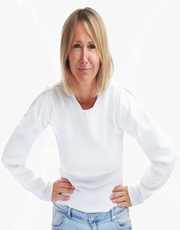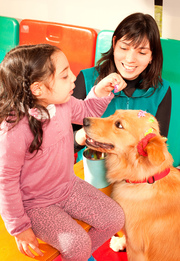Menopause is a natural biological process that marks the end of a woman’s reproductive years. It typically occurs in women in their late 40s or early 50s, but can occur earlier or later. Menopause can bring about a range of symptoms, including hot flashes, night sweats, mood swings, and changes in libido.
These symptoms can be difficult to manage, and can have a significant impact on a woman’s quality of life.
Understanding Menopause
Menopause is a natural biological process that marks the end of a woman’s reproductive years. It is a normal part of aging and occurs when a woman’s ovaries stop producing eggs. Menopause typically occurs between the ages of 45 and 55, with the average age being 51.
What Is Menopause?
Menopause is defined as the point in time when a woman has not had a menstrual period for 12 consecutive months. It is diagnosed retrospectively, after a woman has gone a full year without a period. The years leading up to menopause are known as perimenopause, during which a woman may experience a range of symptoms as her body adjusts to changing hormone levels.
Stages of Menopause
Menopause is typically divided into three stages: perimenopause, menopause, and postmenopause. Perimenopause is the stage leading up to menopause, during which a woman’s hormone levels begin to fluctuate. Menopause is the point at which a woman has not had a period for 12 consecutive months. Postmenopause is the period of time after menopause.
Common Symptoms and Signs
The most common symptoms of menopause include hot flashes, night sweats, vaginal dryness, mood changes, and sleep disturbances. These symptoms are caused by changes in hormone levels, particularly a decline in estrogen. While some women experience few or no symptoms, others may experience significant discomfort during this time.
Less Common Symptoms to Know
In addition to the more common symptoms of menopause, there are also less known indicators of perimenopause. These may include irregular periods, heavy bleeding, and changes in libido. It is important for women to be aware of these less common symptoms so that they can seek appropriate medical care if needed.
The Impact of Menopause on Family Dynamics
Menopause is a natural biological process that marks the end of a woman’s reproductive years. However, it can also have a significant impact on family dynamics. Here are some ways in which menopause can affect the family:
Changes in the Parent-Child Relationship
Menopause can bring about changes in the parent-child relationship. Women going through menopause may experience mood swings, irritability, and other emotional changes that can affect their interactions with their children. Children may find it difficult to understand what their mother is going through and may feel confused or even scared by her behavior.
Supporting Mom as a Partner
Menopause can also affect the relationship between a woman and her partner. Women going through menopause may experience a decrease in libido, vaginal dryness, and other physical symptoms that can make intimacy uncomfortable or even painful. This can put a strain on the relationship, especially if the partner does not understand what is happening.
Menopause and Its Effects on Family Life
Menopause can also have an impact on family life as a whole. Women going through menopause may experience stress, anxiety, and other emotional changes that can affect their ability to cope with everyday tasks. This can put a strain on the entire family, especially if the woman is the primary caregiver.
To support a woman going through menopause, it is important for family members to be understanding and patient. They should try to educate themselves about menopause and its effects, and be willing to offer emotional support and practical help when needed. By working together, families can help their loved one navigate this challenging time and emerge stronger on the other side.
How to Offer Support
Menopause can be a challenging time for women, and they need support from their loved ones to navigate through it. As a dad or a kid, you can offer support to your mom during this phase of her life. Here are some strategies that can help.
Emotional Support Strategies
Menopause can cause mood swings, irritability, and other emotional symptoms. It is crucial to be patient and understanding during this time. Here are some emotional support strategies that can help:
- Listen actively: Listen to your mom’s concerns, fears, and emotions without interrupting or judging her. Show empathy and validate her feelings.
- Be supportive: Offer words of encouragement, praise, and appreciation. Let her know that you are there for her and that you love her.
- Help her relax: Encourage your mom to take some time for herself. Suggest relaxation techniques such as deep breathing, meditation, or yoga.
- Seek professional help: If your mom’s emotional symptoms are severe or affecting her quality of life, suggest that she seek professional help. A therapist or a counselor can help her cope with her emotions and develop coping strategies.
Practical Help and Comfort Measures
Menopause can also cause physical symptoms such as hot flashes, night sweats, and insomnia. Here are some practical help and comfort measures that can help:
- Provide practical help: Offer to help with household chores, cooking, or grocery shopping. This can reduce your mom’s stress and help her conserve her energy.
- Create a comfortable environment: Adjust the temperature in the house, provide a fan or a cool cloth for hot flashes, and make sure your mom has comfortable bedding and clothing.
- Encourage healthy habits: Encourage your mom to exercise regularly, eat a healthy diet, and avoid alcohol and caffeine. These habits can help reduce the severity of her symptoms.
Encouraging Open Communication
Communication is essential during menopause. Here are some ways to encourage open communication:
- Initiate conversations: Ask your mom how she is feeling, what she needs, and how you can help. Encourage her to express herself and listen actively.
- Be respectful: Avoid criticizing or belittling your mom’s feelings or experiences. Respect her boundaries and opinions.
- Educate yourself: Learn about menopause and its symptoms. This can help you understand what your mom is going through and offer better support.
Managing Menopause Symptoms Together
Menopause can be a challenging time for women, but it can also be a difficult time for their families. As a dad, it’s important to support your partner through this transition and help her manage her symptoms. By working together, you can make this time more comfortable for everyone involved.
Dealing with Hot Flashes and Night Sweats
One of the most common symptoms of menopause is hot flashes and night sweats. These sudden, intense feelings of heat can be uncomfortable and disrupt daily life. As a family, there are several things you can do to help manage these symptoms.
- Keep the house cool: Make sure the temperature in your home is comfortable and cool. Use fans or air conditioning to help regulate the temperature.
- Dress in layers: Encourage your partner to dress in layers so she can easily remove clothing if she feels a hot flash coming on.
- Stay hydrated: Drinking plenty of water can help regulate body temperature and prevent dehydration.
- Use cooling products: Cooling towels, pillows, and other products can help provide relief during hot flashes and night sweats.
Improving Sleep Quality
Menopause can also disrupt sleep, which can lead to fatigue and other health issues. As a family, you can work together to improve sleep quality and help your partner get the rest she needs.
- Create a relaxing bedtime routine: Encourage your partner to establish a relaxing bedtime routine that includes activities like reading or taking a warm bath.
- Invest in comfortable bedding: Make sure your partner has comfortable bedding that promotes good sleep, such as a supportive mattress and pillows.
- Encourage regular exercise: Regular exercise can help improve sleep quality and reduce other menopause symptoms.
- Limit caffeine and alcohol: Caffeine and alcohol can disrupt sleep, so it’s important to limit consumption, especially in the evening.
Diet, Exercise, and Lifestyle Adjustments
Making adjustments to diet, exercise, and lifestyle can also help manage menopause symptoms. As a family, you can support your partner by making these changes together.
- Eat a healthy diet: Encourage your partner to eat a healthy, balanced diet that includes plenty of fruits and vegetables, lean protein, and whole grains.
- Exercise regularly: Regular exercise can help reduce menopause symptoms, improve sleep, and promote overall health.
- Manage stress: Stress can exacerbate menopause symptoms, so it’s important to find healthy ways to manage stress, such as meditation, yoga, or deep breathing exercises.
- Quit smoking: Smoking can increase the risk of menopause symptoms and other health issues, so it’s important to quit smoking if you or your partner smoke.
By working together as a family, you can help your partner manage her menopause symptoms and make this transition as comfortable as possible. Encourage open communication and be supportive of any changes your partner needs to make to feel her best.
Navigating Emotional Changes
Menopause is a natural and inevitable part of a woman’s life. It marks the end of reproductive years and can bring about a range of physical and emotional changes. Emotional changes can be particularly challenging for both the woman experiencing them and her family. In this section, we will explore some ways that dads and kids can support mom through emotional changes during menopause.
Recognizing Mood Variations
Mood variations are a common symptom of menopause. Women may experience irritability, mood swings, and even depression. It is important for dads and kids to recognize these changes and respond with empathy and understanding. Encourage open communication and active listening. Let mom know that she is not alone and that her feelings are valid.
Managing Anxiety and Stress
Anxiety and stress can also be common during menopause. Encourage mom to practice stress-reducing activities such as yoga, meditation, or deep breathing exercises. These activities can help to reduce anxiety and promote relaxation. Additionally, dads and kids can help to alleviate stress by taking on more household responsibilities and giving mom some time to herself.
Building Confidence and Self-Esteem
Menopause can also bring about negative emotions and a decrease in self-esteem. Dads and kids can help to build mom’s confidence by offering positive affirmations and support. Encourage mom to pursue hobbies or activities that make her feel good about herself. Remind her of her strengths and accomplishments.

In Summary, Create a Supportive Environment for Mom
Menopause can be a challenging time for women, and it’s important for dads and kids to support mom during this transition. Creating a supportive environment for mom can help her manage symptoms and feel more comfortable during this time.
Support can come in many forms, including emotional support, physical support, and practical support. Dads and kids can offer emotional support by listening to mom’s concerns and reassuring her that she’s not alone. They can offer physical support by helping with household chores or running errands, and practical support by researching treatments or accompanying her to doctor’s appointments.
It’s also important for mom to have a strong support system outside of the family. Friends, community members, and healthcare professionals can all play a role in supporting mom during menopause. Encourage mom to reach out to friends or join a support group to connect with others going through similar experiences.
Creating a team approach to supporting mom can also be helpful. This can involve dividing up tasks and responsibilities among family members, and working together to ensure that mom’s needs are being met. It’s important for everyone to be on the same page and communicate openly about how they can best support mom during this time.
Finally, it’s important to reassure mom that menopause is a normal and natural part of life. While it can be uncomfortable and challenging, it’s not something to be ashamed of or embarrassed about. By creating a supportive environment and offering reassurance, dads and kids can help mom navigate this transition with confidence and ease.











